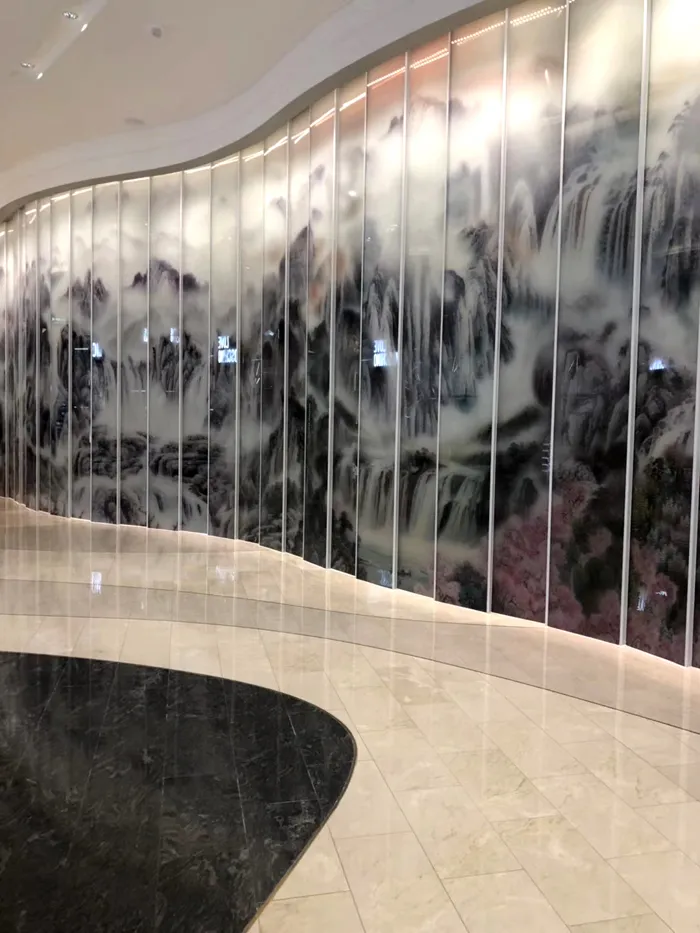Need some help?
We would love to help you with your project.
Design printing on glass has never been easier. Using state-of-the-art digital printing equipment, AJJ is equipped to create high-resolution, artistic masterpieces on glass. With AJJ’s High-Definition Glass digital printing technology, you can put full-color photos, logos, patterns, and illustrations right onto your glass using our ultra-durable ceramic inks. digitally printed glass can be used in monolithic, insulated, or laminated glass constructions and is ideal for use in facades, skylights, canopies, interior partitions, and interior décor. Delivering high-quality, durable solutions for commercial, multifamily, hospitality, and residential projects.

Curtain walls, punch windows, doors and interior partitions, railings, stairs and glass flooring, wall coverings, etc.
Kitchen backsplashes, shower doors, etc.
Glass elevators, signage, illuminated signs, etc.
The ceramic coating is applied on face #2 on the supporting lite of glass.
* The glass must be heat-strengthened or fully tempered. It is not recommended to expose the ceramic coating to the elements. Use on an external face should be avoided.
The ceramic coating of laminated glass can be applied on face # 2, 3, or 4.
* All the glass plies that make up the laminated glazing should be heat-strengthened or fully tempered for exterior applications.
The ceramic coating is applied on face #2 or 3 of the insulated glass unit.
* The two lines that make up the unit should be heat-strengthened or fully tempered.
*Certain conditions apply. Contact us for more information.
Ultraclear (Low iron), Clear, Tinted, Low-E, Laminated, Bent, Tempered, Heat-Strengthened.
Architectural – 4mm to 12mm Grade ‘A’ safety glass manufactured to AS/NZS 2208-1996 Safety glazing materials in buildings and 15mm to 19mm Toughened glass.
The Australian/New Zealand standard for safety glazing materials assesses the impact resistance of tempered glass. It classifies glass based on the drop height required to break it and provides guidelines for its use in different applications.